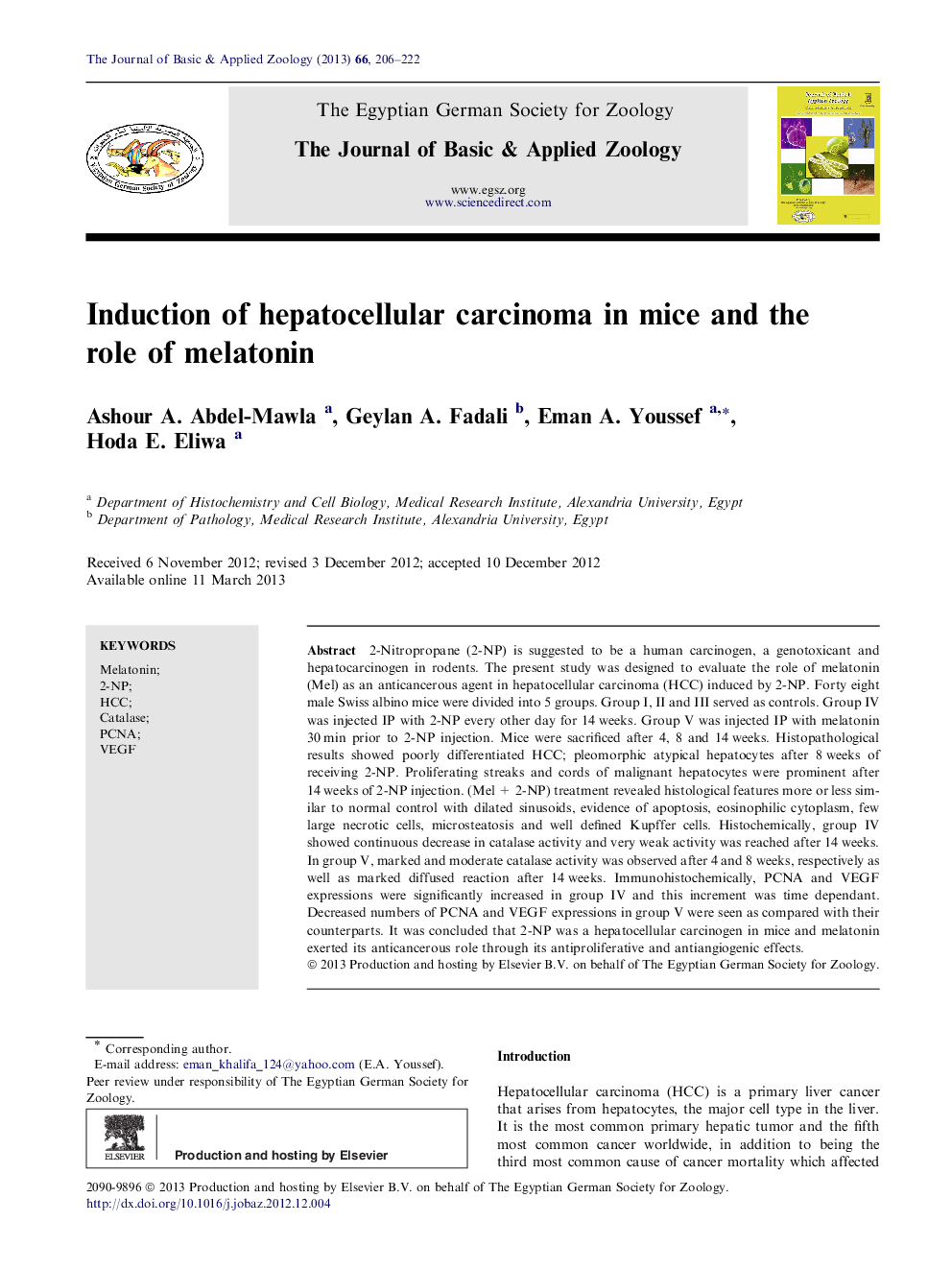| Article ID | Journal | Published Year | Pages | File Type |
|---|---|---|---|---|
| 4493545 | The Journal of Basic & Applied Zoology | 2013 | 17 Pages |
2-Nitropropane (2-NP) is suggested to be a human carcinogen, a genotoxicant and hepatocarcinogen in rodents. The present study was designed to evaluate the role of melatonin (Mel) as an anticancerous agent in hepatocellular carcinoma (HCC) induced by 2-NP. Forty eight male Swiss albino mice were divided into 5 groups. Group I, II and III served as controls. Group IV was injected IP with 2-NP every other day for 14 weeks. Group V was injected IP with melatonin 30 min prior to 2-NP injection. Mice were sacrificed after 4, 8 and 14 weeks. Histopathological results showed poorly differentiated HCC; pleomorphic atypical hepatocytes after 8 weeks of receiving 2-NP. Proliferating streaks and cords of malignant hepatocytes were prominent after 14 weeks of 2-NP injection. (Mel + 2-NP) treatment revealed histological features more or less similar to normal control with dilated sinusoids, evidence of apoptosis, eosinophilic cytoplasm, few large necrotic cells, microsteatosis and well defined Kupffer cells. Histochemically, group IV showed continuous decrease in catalase activity and very weak activity was reached after 14 weeks. In group V, marked and moderate catalase activity was observed after 4 and 8 weeks, respectively as well as marked diffused reaction after 14 weeks. Immunohistochemically, PCNA and VEGF expressions were significantly increased in group IV and this increment was time dependant. Decreased numbers of PCNA and VEGF expressions in group V were seen as compared with their counterparts. It was concluded that 2-NP was a hepatocellular carcinogen in mice and melatonin exerted its anticancerous role through its antiproliferative and antiangiogenic effects.
